The best gravel ride of my life was on a road bike
A 12km alpine gravel climb, and descent, on 28mm tyres with inner tubes
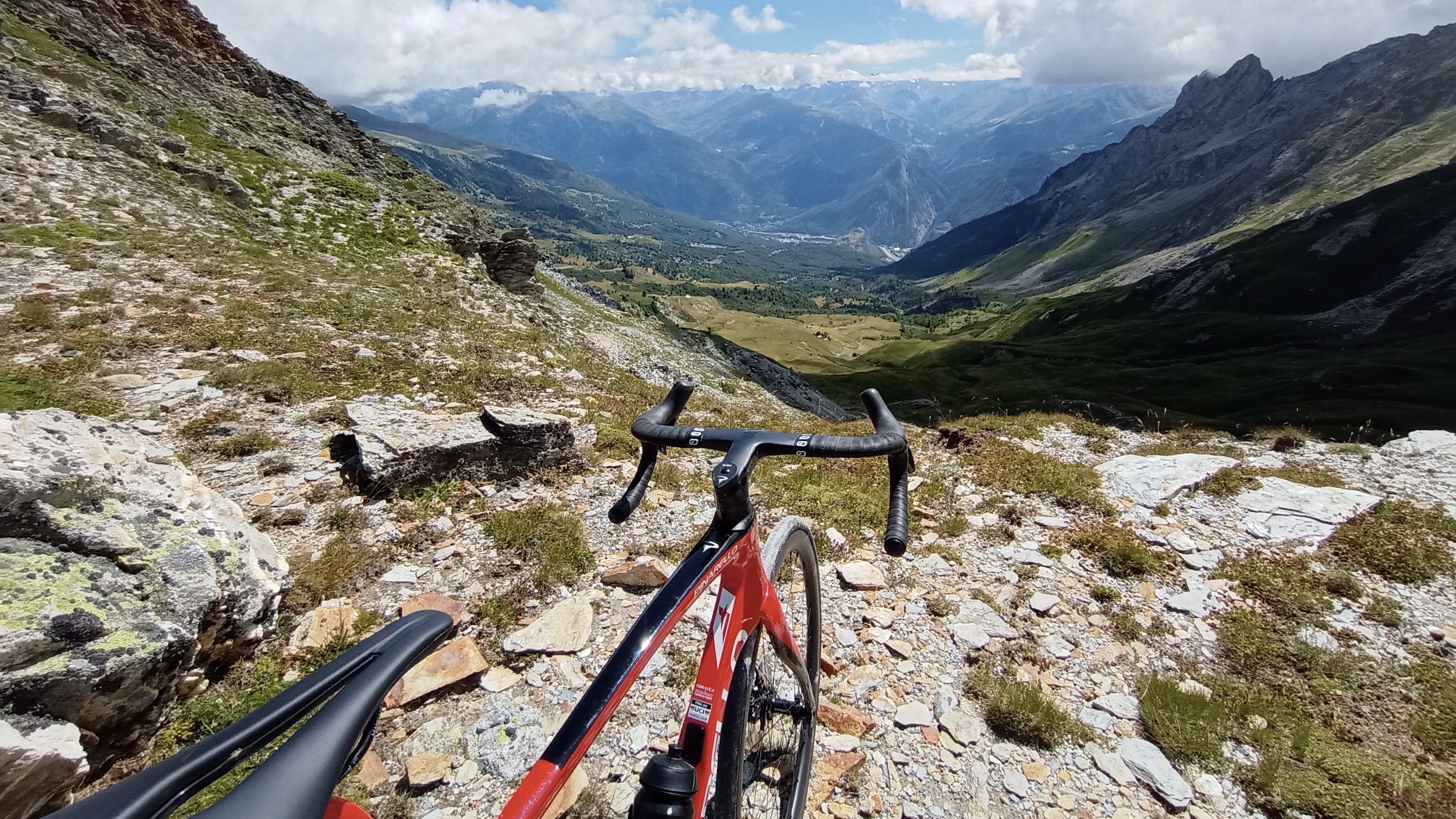
Recently I spent some time in the French Alps, armed only with the new Pinarello F7, but with a craving to do some gravel riding. For those of you unfamiliar, the Pinarello F model is very much a racing-focused road bike; with 28mm tyres, deep carbon rims, road geometry, and a one-piece cockpit. Definitely not a gravel bike. Not even close. As first-world problems go it’s up there with the specialty coffee shop running out of oat milk and having to opt for almond, but it did give me an opportunity to test what has become a bit of a meme phrase: Any bike is a gravel bike if you’re brave enough.
Having tested many of the best gravel bikes recently, one of the key takeaways from that testing was that there really isn’t a ‘best’ gravel bike, just models that are better or worse given the situation at hand. As I’d grown bored of the only realistic road climb in the area, the 14km upper portion of the Val Thorens ascent, I decided to point myself in the direction of the 12km gravel climb from Le Chatelard to the Petit Col des Encombres and see how far I could go before either the bike or my legs gave up. The reward would be a hell of a view, but I’d have to gain over 1000m of elevation to reach it. Could it be done on a road bike? Would I regret not having brought a gravel bike?
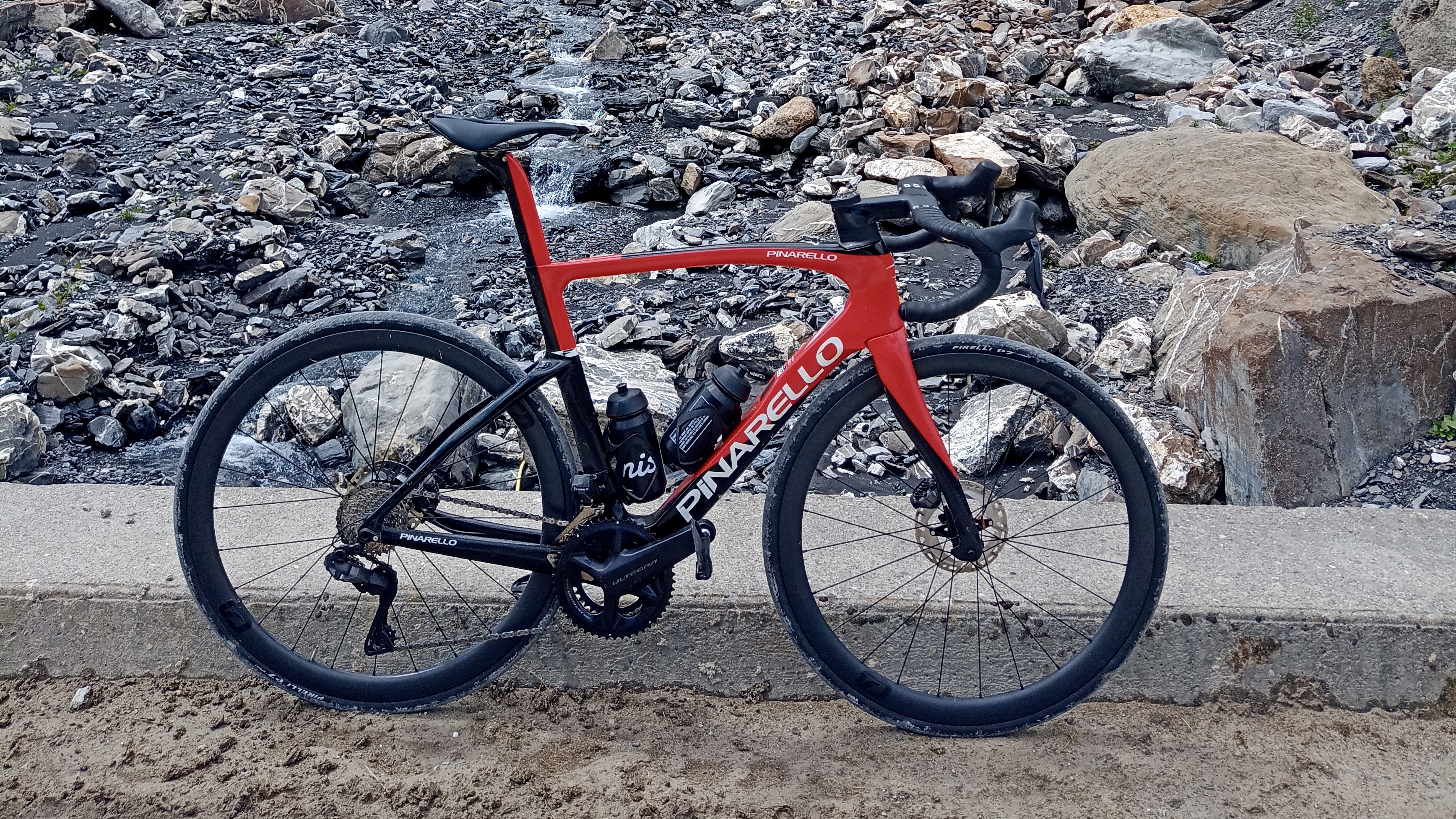
No plan, besides a sandwich
I didn’t really plan for this to be something I would end up writing up for work, a holiday is a holiday after all; I just wanted a day out in the hills and the sunshine. My only concession to ‘gravel specific’ was a pair of Pearl Izumi Expedition Pro cargo bib shorts, though I wear cargo bibs on every ride. Not content with the capacity of the bibs and a standard jersey I threw on a Chrome Kadet sling bag, into which I stuffed some spares and tools, a little down jacket in case the weather decided against playing ball, two generously filled baguettes (roast chicken and salad in one, blue cheese in the other), a moderately ripe banana, and a pair of sandals in case I needed to walk. Besides this, everything else was standard road fare: 28mm tyres, butyl inner tubes, road pedals, road shoes, and a road groupset. “Will it gravel?”, I thought to myself in the style of the now vintage YouTube channel ‘Will It Blend?’.
The initial 1.5km of the route was paved, in the loosest sense, with tarmac. There’s a big disparity in the Alps between those main roads, especially if they’ve been used in the Tour de France, which feature glossy smooth blacktop, and the backroads, which are regularly destroyed by freeze-thaw, grit, and are generally left to rot in the hope that the locals using it are either armed with a 4WD or a heavy right foot and plenty of momentum.
Soon enough the paved road, beset with tangential gutters at regular intervals that threatened to bottom out the tyres that I’d neglected to pump up properly, gave way to good old-fashioned gravel. I’ve never ridden the cobbles of Paris-Roubaix, or the white roads of Strade Bianche, but pros race on them and besides some pretty spectacular mechanical incidents most get around without exploding a tyre, or destroying a wheel, so going uphill at least I rated my chances.
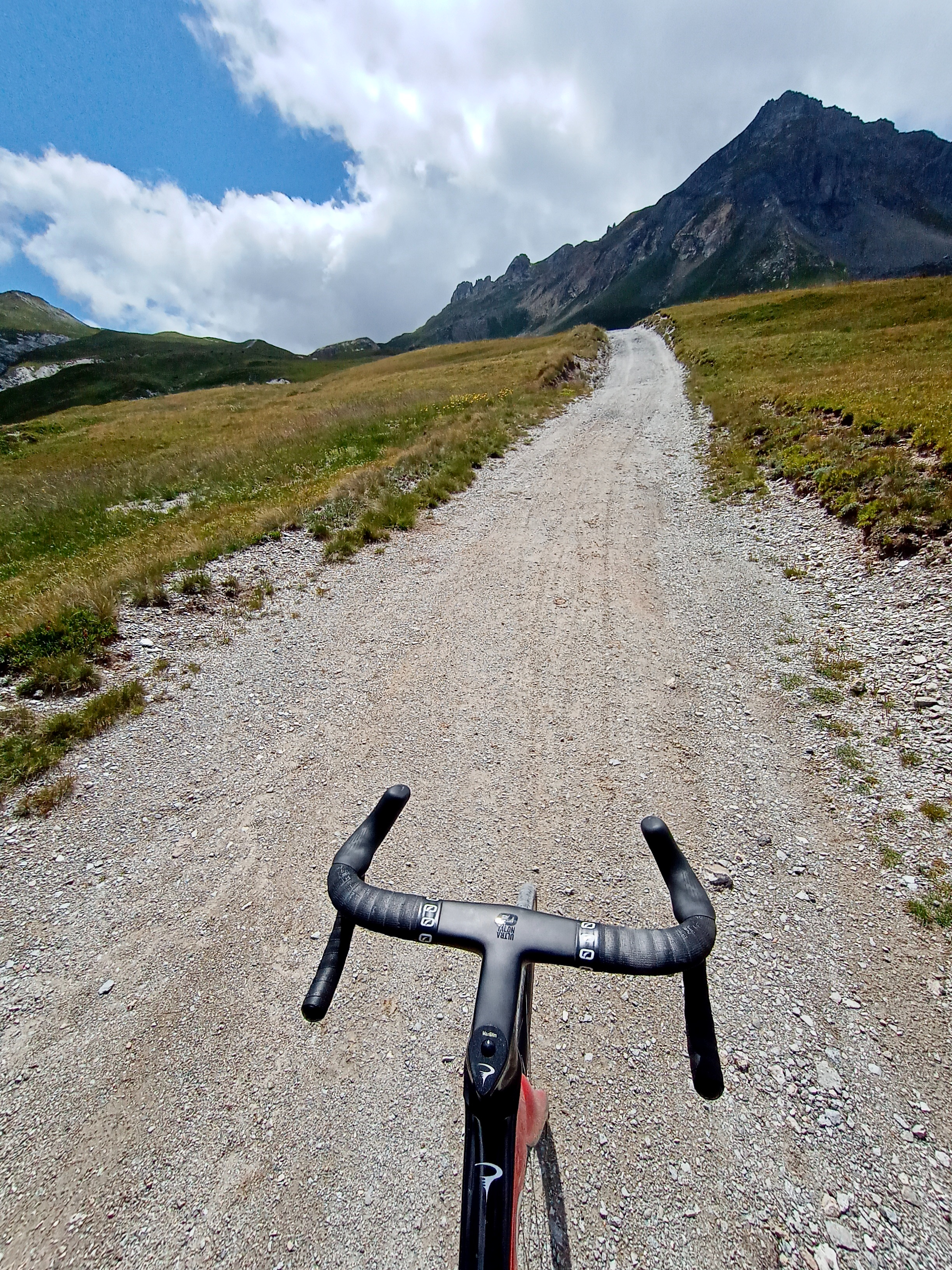
Notes on tyre width
In my relatively short cycling career I’ve seen road bikes with 19mm tyres be seen as normal, through to now where you have endurance bikes like the new Canyon Endurace specced with a 32mm rear tyre and nobody batting an eyelid. For road racing though a 28c tyre seems to be the current norm. It’s entirely insufficient for off-road riding. There isn’t enough contact patch to have confidence in grip, to put the power down, and on slick tyres there aren't any knobs to dig in either, which holds you back, especially in the corners. That being said though, with a different framing, they are fine. In all aspects the bike succeeded in propelling me forwards, slowing me down when asked, and turning both left and right as required.
Would I have been better off on some of the best gravel tyres? Yeah, of course, I would. I’d have been faster, more comfortable, and safer too, but I could still ride the bike, and so on I went, upwards.
Get The Leadout Newsletter
The latest race content, interviews, features, reviews and expert buying guides, direct to your inbox!
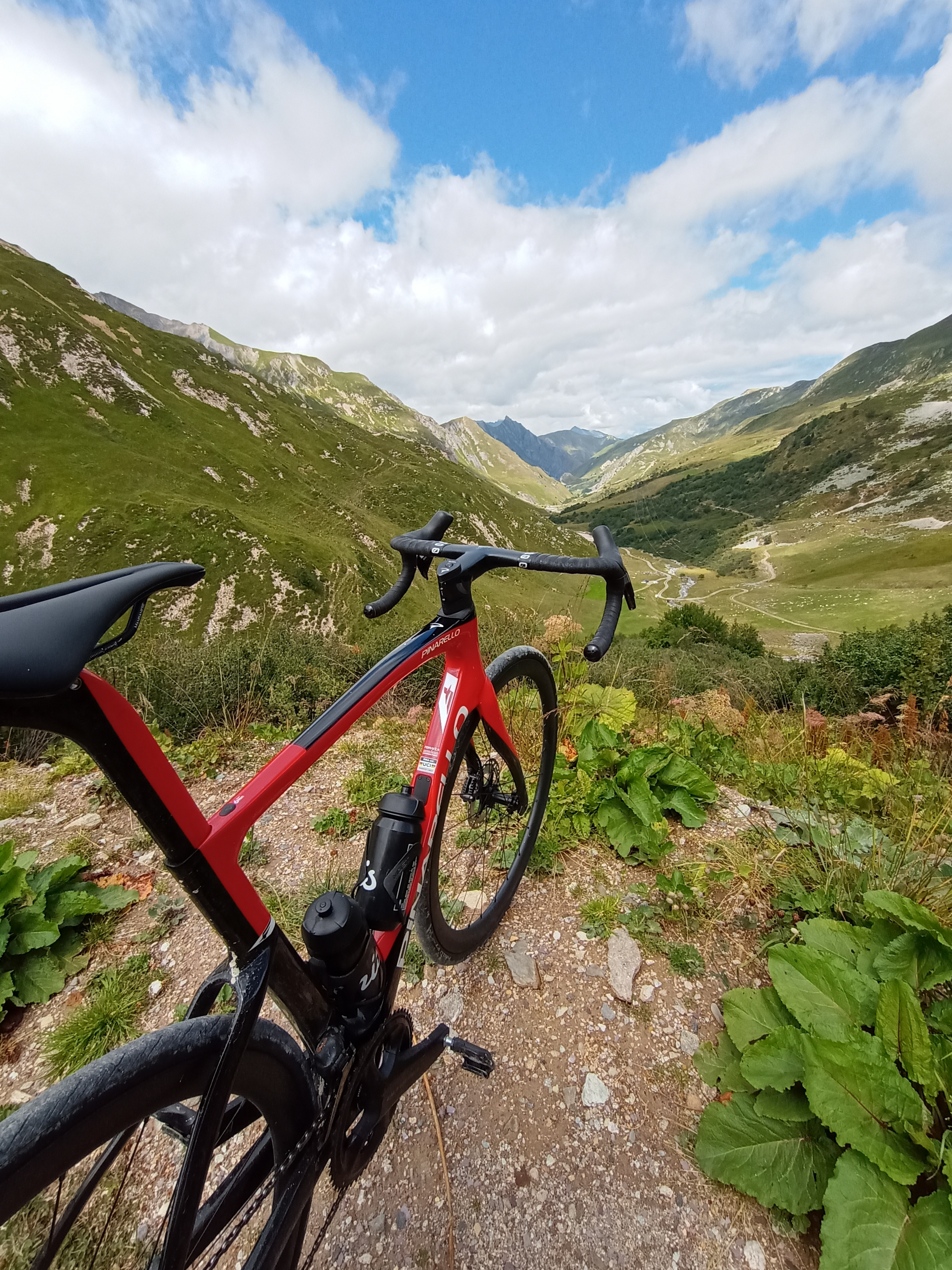
A change of footwear
I’d not checked the climb, just seen its entire length from afar during a hike a few days prior. At around a third of the way in the gravel track reaches over 23% in gradient, at which point I’d have probably struggled even with appropriate tyres and gearing. Enter the sandals, a set of Quoc slides to be precise, which were about as poorly suited to a 23% gravel climb as the 28mm tyres. Without a rear strap, I was in constant danger of falling out the back of them, but at least I wasn’t tearing up my cleats.
Having walked a couple of kilometres in the slides I’m convinced that if I were to only change one thing to make the experience better, a change of shoes and pedals to a set of the best gravel shoes would have been more of a net benefit than a change of wheels. I did expect some bits wouldn’t be rideable, and having a set of shoes that I could walk in would have meant I didn’t have to carry a second pair, and then sling my road shoes into the bag and have them flap about every step. Given how good gravel shoes are now it wouldn’t have been any real detriment, especially in the context of a distinctly non-performance ride.
Eventually, predictably even, the track became a rideable gradient again, and I had to decide between the faff of a shoe swap again, or to just ride a bit in slides. Naturally, I decided to try and ride still steep gravel, on a road bike, in slides, which was definitely the wrong decision.

An electrifying summit
Bike weight to me matters less than most other factors, but when the gravel track I’m riding on passes under power lines it becomes a much greater factor. I don’t like pylons, and when I’m close enough to hear them crackle they scare me witless. When I’m close enough to hear them crackle AND I can see the texture of the cables themselves I want to get as far away from them as possible as fast as possible. This gravel track is effectively a service road for the pylons that traverse the pass, and near the summit, the paths of the power lines and the track itself converge. At this point, I simply shouldered the bike and went off-piste, which felt fitting given that the area is far more famous as a ski resort than it is as a cycling one.
This is for me where bike weight felt important, as well as those times when I had to push. At walking speed, aero matters not a sausage, while weight is paramount. At the time of writing, I’ve not weighed the F, but I suspect it’s just shy of 8kg: Perfect shouldering weight.
Despite the pylons and the fact I was on a totally inappropriate bicycle, with nothing at all gravel specific, I made it to the top of the Col for a sit-down and a sandwich. And another sandwich. And a banana. And a slice of apple tart that I’d forgotten about. It had taken a solid three hours to make it, but, madly, I’d made it on a road race bike and took in the view for a few minutes in the sun.
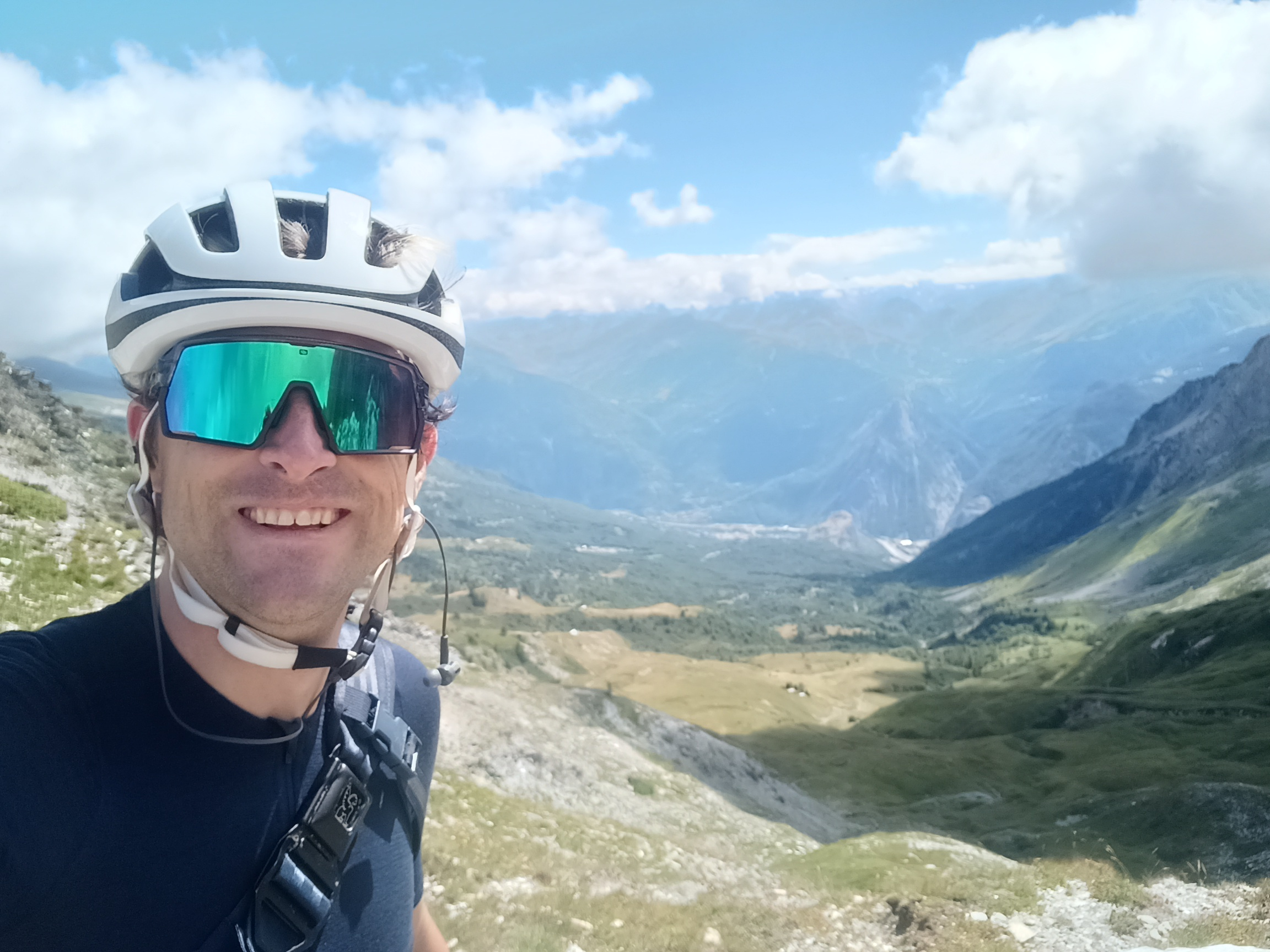
White knuckle ride home
A 12km descent on a gravel bike would probably be considered ‘testing’. On a road bike, it is, even as someone who enjoys strategic under-biking, a dumb undertaking. While the bike for the majority of the ascent was fine, if uncomfy and a little jittery, it was very much like bringing a toothpick to a gunfight on the descent. I am astounded I didn’t pop the normal butyl inner tubes. I’m aghast I didn’t wash the front wheel out on a corner. At times I was surprised my forearms remained intact after being on the brakes hard for extended periods while also hanging on for dear life.
Despite all this, despite being on completely the wrong bike, it was one of the best gravel rides of my life. You might think, then, that my conclusion is ‘no, you don’t need a gravel bike’. Unfortunately, I’m going to disappoint those of you expecting that, as it would absolutely have been a better day out on a gravel bike. I’d go so far as to say it would have been yet better still on a lightweight XC mountain bike.
Modern bikes are extremely capable, surprisingly durable, and with the ever-increasing crossover within the Venn diagram of bike types, more able to tackle rough ground as well as smooth. This doesn’t mean though that if you’re mostly riding gravel, you’d be better off with a road bike. You would absolutely be better with wider tyres, lower gearing, and shoes that you can walk in.
I will say though that if you’re gravel-curious then you can get through an awful lot of terrain with a delicate mix of care and sheer bloody-mindedness. If you enjoy it, then you’ll enjoy it more on a gravel bike. If you hate it, you’ll probably hate it less on a gravel bike. In short, it’s absolutely possible to justify the existence of gravel bikes, it just depends on your definition of ‘need’.
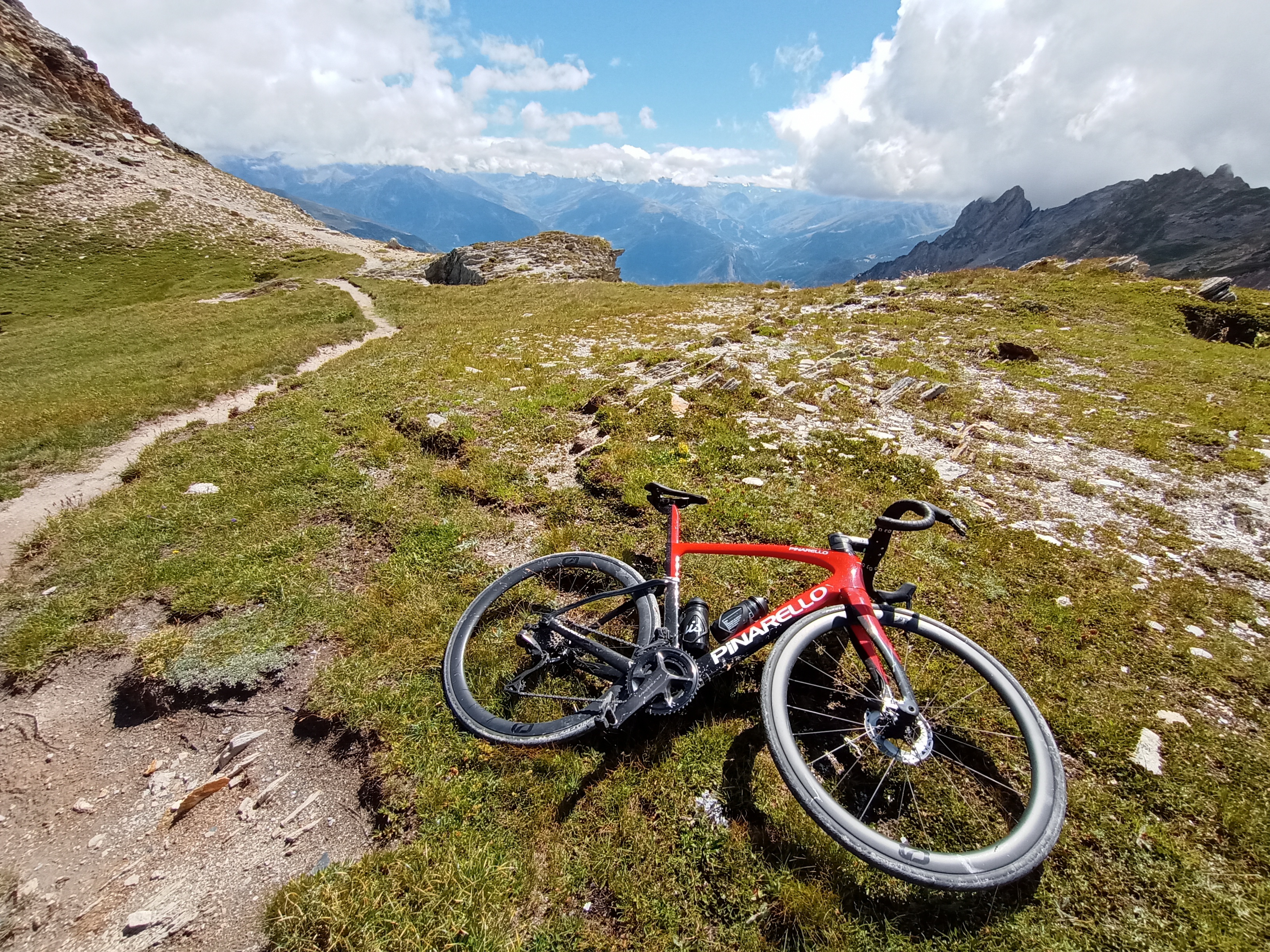

Will joined the Cyclingnews team as a reviews writer in 2022, having previously written for Cyclist, BikeRadar and Advntr. He’s tried his hand at most cycling disciplines, from the standard mix of road, gravel, and mountain bike, to the more unusual like bike polo and tracklocross. He’s made his own bike frames, covered tech news from the biggest races on the planet, and published countless premium galleries thanks to his excellent photographic eye. Also, given he doesn’t ever ride indoors he’s become a real expert on foul-weather riding gear. His collection of bikes is a real smorgasbord, with everything from vintage-style steel tourers through to superlight flat bar hill climb machines.